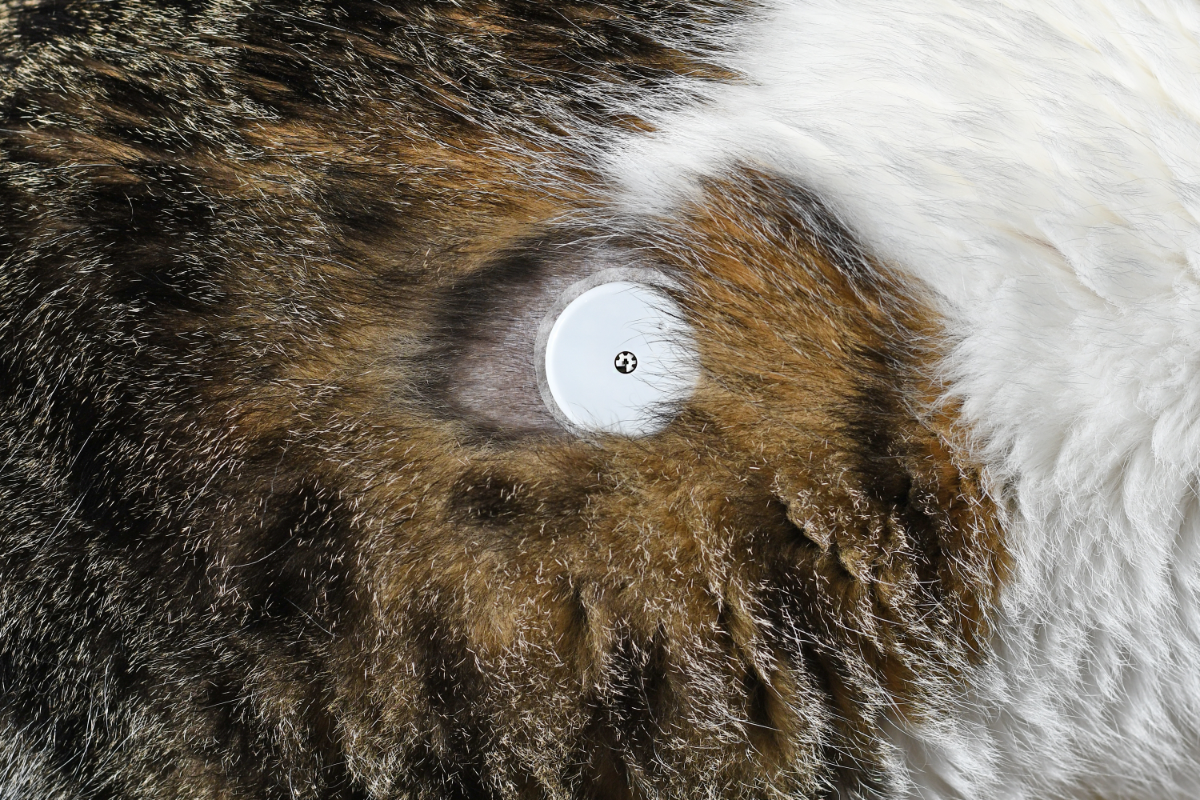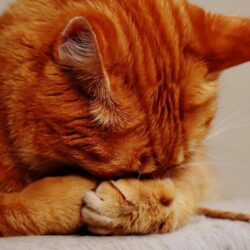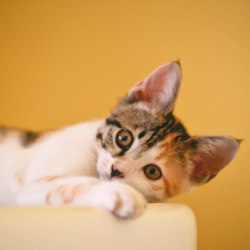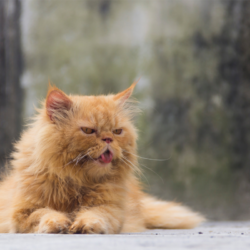Diabetes mellitus is a common condition in cats, requiring careful management of blood glucose levels to ensure their well-being. Continuous glucose monitoring sensors, such as the FreeStyle Libre, offer an innovative solution for blood glucose monitoring in diabetic cats. This article examines the benefits and use of FreeStyle Libre sensors in feline blood glucose monitoring, highlighting the implications for the health and quality of life of cats with diabetes.
Background on diabetes in cats
Diabetes mellitus ( DM) is a common condition in older cats. It requires careful monitoring of response to insulin therapy for effective management. Adequate glycaemic control can lead to remission of diabetes. Continuous measurement of interstitial glucose significantly improved glycaemic control in animals with DM. In cats, DM is predominantly type 2. It is characterised by abnormal insulin secretion by the pancreas and peripheral insulin resistance.
Diagnosis is based on clinical signs such as polyuria, polydipsia, polyphagia and weight loss, associated with hyperglycaemia and glycosuria. However, stress hyperglycaemia complicates the diagnosis, requiring the exclusion of other diseases such as hyperthyroidism and gastrointestinal disorders.
Treatment of feline DS includes insulin therapy, diet modification, management of concomitant diseases and weight control. Remission is possible when blood glucose levels are well controlled. However, this depends on factors such as the severity of pancreatic damage, insulin resistance due to disease or medication,obesity, and the possibility of a low-carbohydrate diet. Good glycaemic management is essential to improve prognosis and avoid progression to type 1 DM.
Routine monitoring of diabetic cats
As a first-line treatment, three types of insulin are suitable for feline diabetes mellitus ( DM):protamine-zinc insulin (PZI),lente insulin (a suspension of porcine insulin and zinc), and insulin glargine. Detemir, another insulin analogue, can also be used, but its high cost makes it less favourable as a first-line treatment.NPH (neutral protamine Hagedorn) insulin has a very short duration of action in cats and is not recommended.
The initial dose of insulin to treat DS is 1 to 3 units per cat (0.25 to 0.5 U/kg), with a preference for the lower end of this range. For optimal glycaemic control, twice-daily injections are preferable. Occasionally, a daily injection of PZI or insulin glargine may be sufficient for some cats. Recommended types of insulin include :
- Lente insulin: 65% crystalline and 35% amorphous
- PZI insulin: insulin combined with protamine and zinc
- Insulin glargine: insulin analogue
- Insulin detemir: insulin analogue
The treatment of DS also involves a specific diet designed to limit postprandial glycaemic fluctuations, maintain an ideal weight and reduce complications. Your vet will determine the type, quantity and frequency of meals.
All insulins need to be administered by subcutaneous injection. What’s more, it’s essential to follow the prescribed doses precisely and use appropriate syringes. Veterinary syringes are graduated at 40 IU, while human syringes are graduated at 100 IU. Injector pens, compatible with the insulin used, simplify administration.
Focus on the FreeStyle Libre sensor
Continuous glucose monitoring (CGM) systems enable continuous assessment of interstitial blood glucose concentration for up to 14 days, using a small flexible catheter placed under the skin. The integration of CGM has improved the ability of vets to monitor diabetic cats on insulin therapy. These devices are more sensitive than conventional blood glucose curves for detecting hypoglycaemia. These devices make it possible to adjust the insulin dose in real time according to diurnal and nocturnal variations in requirements.
Studies show that interstitial glucose concentration correlates well with blood glucose concentration. CGM devices, such as the Freestyle LibreTM 14 day (FSLTM), are affordable, easy to use and well tolerated by animals. Veterinarians recommend the FSLTM, which has been validated in cats, for newly diagnosed or unstable diabetic cats with ketoacidosis. The FSLTM 2 and 3 models, as well as other devices such as the Dexcom-CGMTM and Eversense CGMTM, have yet to be fully evaluated in cats.
The FSLTM measures interstitial glucose every minute and stores data every 15 minutes. In fact, it has an 8-hour storage capacity. The data can be downloaded via a dedicated reader or smartphone application. They are then analysed to assess daily blood glucose variability and weekly trends. The FSLTM sensor is disposable and easy to fit, and can be protected by various means to prevent it being ripped off.
Although there may be discrepancies between interstitial glucose measurements and clinical values, particularly in the event of rapid fluctuations in blood glucose levels, these systems provide invaluable data for adjusting insulin treatment. In the event of a malfunction, blood glucose levels should be checked using reliable alternative methods.
How do I use it?
Fitting a continuous glucose monitor (CGM), such as the Freestyle LibreTM 14 day (FSLTM), follows specific steps to ensure accurate readings and minimise discomfort.
- Site Preparation: Select a suitable area, such as the dorsolateral region of the chest wall or between the shoulders. Trim a square of skin approximately 7×7 cm. Clean the skin with an alcohol swab to disinfect it.
- Application of Surgical Glue: Apply 4 to 8 drops of tissue glue to the underside of the sensor.
- Place the sensor in the applicator. Position the applicator at right angles to the skin. Unfold the sensor, inserting the needle under the skin and securing the disc to the skin surface. Hold in place for 1 to 2 minutes to ensure good adhesion.
- Sensor activation: Scan the sensor with a dedicated reader or compatible smartphone to activate it. Wait 60 minutes before use.
- Sensor protection: Protect the sensor with an adhesive patch, T-shirt or special waistcoat if necessary.
- Data Collection: Scan the sensor at least every 8 hours to avoid data loss. Download the data to a computer or the LibreView website.
- Sensor Removal: Remove the sensor after 14 days or if it becomes dislodged. You can use alcohol or baby oil to remove the glue.
These steps ensure that the MGC sensor is fitted correctly. This allows continuous and accurate monitoring of blood glucose levels in diabetic cats.





